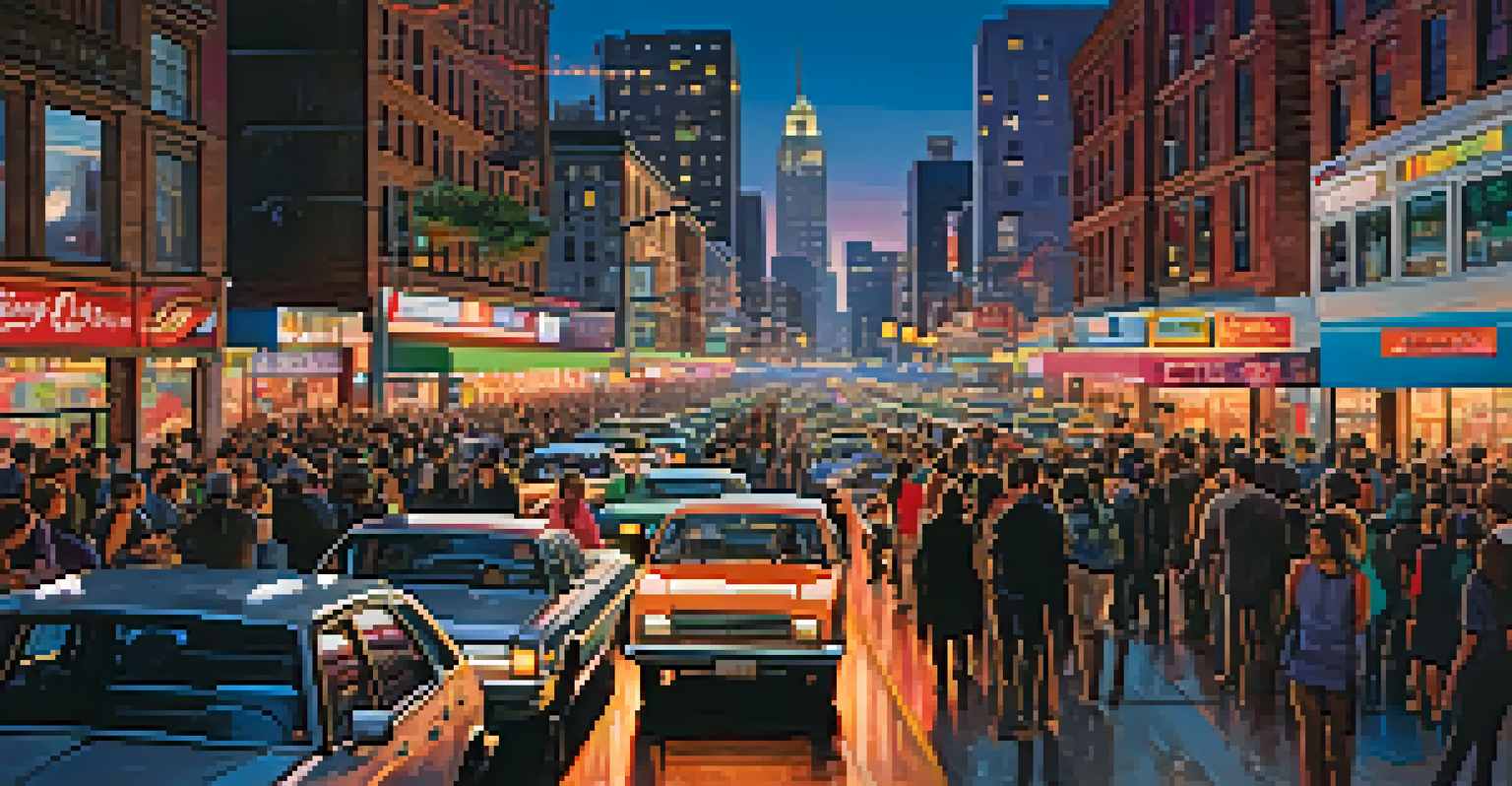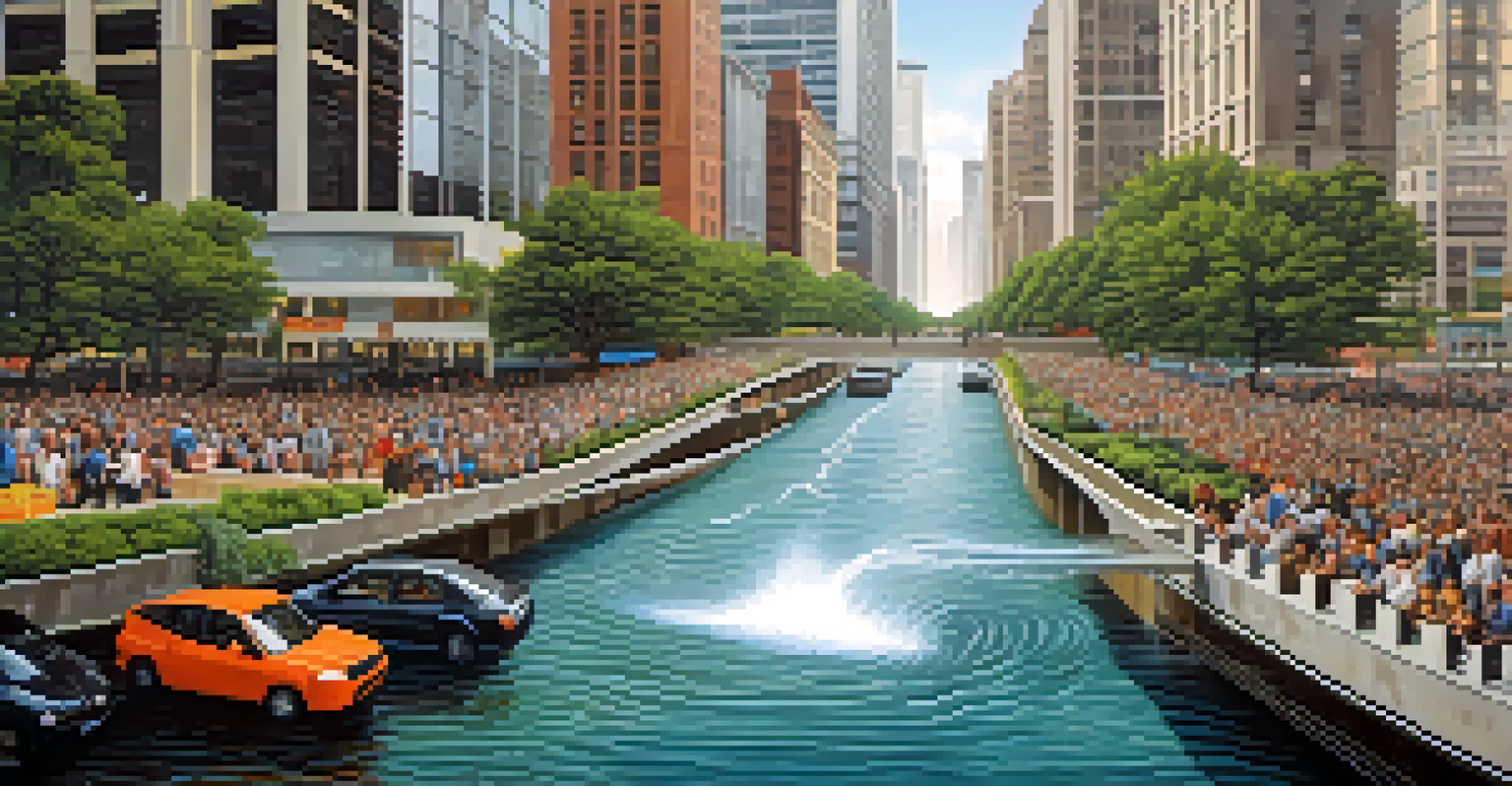Soundscapes: How Environment Influences Musical Communication

What Are Soundscapes and Their Role in Music?
Soundscapes refer to the unique auditory environment in which sounds occur. Think of them as the backdrop to our musical experiences, influencing how we perceive and create music. Just as a painter uses different colors to evoke emotions, musicians use the soundscape around them to shape their compositions.
Music is the shorthand of emotion.
For instance, a bustling city may inspire fast-paced, energetic beats, while the gentle rustling of leaves in a forest might lead to softer, more melodic tunes. This interplay between environment and music is fascinating and reflects how our surroundings can shape artistic expression.
Understanding soundscapes helps us appreciate the diversity of musical styles around the world. Each culture's unique environment contributes to its distinctive sound, making music a universal yet deeply personal form of communication.
Historical Context: Soundscapes in Different Cultures
Throughout history, soundscapes have played a significant role in shaping musical traditions. For example, the rhythmic patterns of African drumming were deeply influenced by the natural sounds of the savanna, while the serene landscapes of Japan inspired the delicate melodies of traditional koto music.

These cultural expressions show how environment molds not only the sounds we hear but also the emotions we feel. In many cases, music serves as a reflection of the geographical and social landscapes from which it originates.
Soundscapes Shape Musical Expression
The unique auditory environments influence how musicians perceive and create music, reflecting their surroundings.
By studying these historical contexts, we can gain insights into how cultural identity and environment are intertwined, leading to a richer understanding of global music traditions.
Modern Soundscapes: Technology and Urbanization
In today's world, technology and urbanization have dramatically changed our soundscapes. The sounds of nature are often replaced by urban noise, such as traffic and construction, which significantly influences contemporary music. This shift challenges musicians to adapt and find inspiration in new auditory environments.
Sound is the vocabulary of nature.
For instance, electronic music often incorporates sounds from city life, blending them with traditional elements to create something entirely new. Artists are now exploring how these modern soundscapes can be used to communicate emotions and stories.
As we navigate this rapidly changing auditory landscape, it becomes essential to recognize the impact of our environment on musical innovation and expression.
The Psychology of Soundscapes in Musical Communication
Soundscapes not only influence music creation but also affect how we respond to it emotionally. Research shows that our environment can evoke specific feelings, which can be mirrored in the music we listen to or create. For example, calming natural sounds may lead to more reflective and soothing compositions.
This psychological connection highlights the power of soundscapes in shaping our experiences with music. When we hear a piece of music, it often reminds us of particular places or moments, enhancing our emotional connection to the piece.
Cultural Exchange Enriches Music
Globalization fosters the blending of soundscapes, leading to innovative musical styles and deeper cultural appreciation.
Understanding this relationship can help musicians craft their messages more effectively, allowing them to resonate with their audience on a deeper level.
Nature vs. Urban: The Dichotomy of Soundscapes
When we think about soundscapes, two primary categories often come to mind: natural and urban environments. Each presents unique auditory experiences that can shape musical expression in different ways. Natural soundscapes, with their gentle winds and birdsong, often inspire tranquility and reflection, while urban soundscapes can evoke energy and chaos.
This dichotomy can be seen in the works of various artists who draw inspiration from their surroundings. For example, a composer might incorporate the sounds of a busy street into their work to capture the essence of city life.
By exploring both types of soundscapes, musicians can create a rich tapestry of sounds that reflect the complexity of human experience.
Cultural Exchange: Soundscapes in Global Music
As globalization continues to connect people worldwide, cultural exchange has never been more prominent. This exchange often leads to blending soundscapes from different regions, creating fresh and innovative musical styles. For instance, the fusion of traditional African rhythms with Western pop has given rise to exciting new genres.
Such collaborations not only enrich the music but also foster understanding and appreciation of diverse soundscapes. Musicians can share their unique environments through their art, allowing listeners to experience different cultures.
Future Trends in Sound and Music
Advances in technology and environmental awareness will shape how soundscapes are used in music, inviting new creative possibilities.
This cultural exchange highlights the importance of soundscapes in global music, serving as a bridge between communities and experiences.
Future Trends: Soundscapes and Musical Innovation
Looking ahead, the relationship between soundscapes and music will likely evolve even further. As technology advances, we may see new ways to manipulate and create soundscapes, leading to innovative musical experiences. Virtual reality and augmented reality are already beginning to explore these possibilities, allowing users to immerse themselves in diverse auditory environments.
Moreover, as awareness of environmental issues grows, musicians may find inspiration in the sounds of nature, aiming to raise awareness through their art. This trend could lead to a resurgence of natural soundscapes in music, encouraging listeners to reconnect with the world around them.

Ultimately, the future of soundscapes in music is bright and full of potential, inviting artists and audiences alike to explore the rich tapestry of sounds that shape our lives.